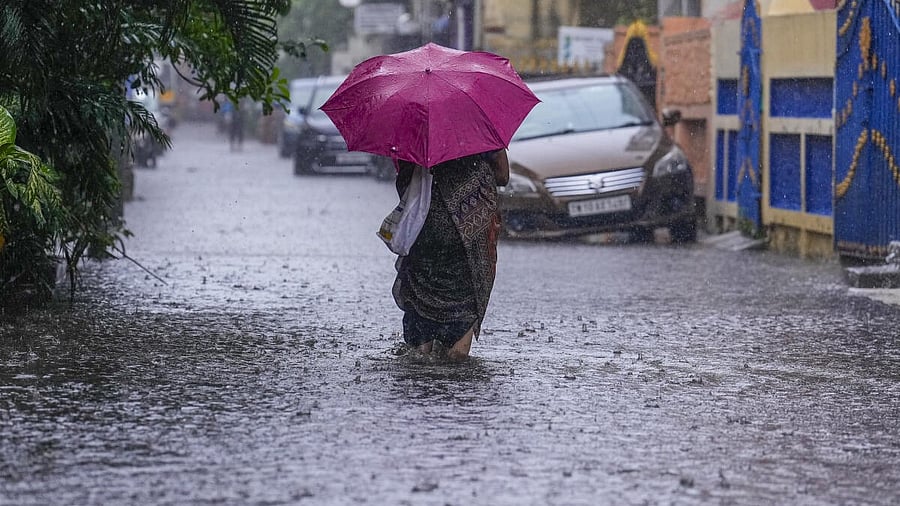
A pedestrian on a waterlogged street. Representative image.
Credit: PTI Photo
New Delhi: As it completes 150 years, the India Meteorological Department aims to achieve “100% detection of all types of severe weather by 2047”, the first step of which was taken on Tuesday when Prime Minister Narendra Modi launched the Rs 2,000 crore Mission Mausam for “predicting weather with high precision.”
Approved by the Union Cabinet four months ago, the mission seeks to improve monsoon forecasts, air pollution alerts, warning for extreme weather events and cyclones besides weather interventions for managing fog, hail, and rain.
This is the first step for the weather bureau to install hundreds of additional data collection sensors, having better forecasting models and augmenting the computation ability to deliver far more accurate weather forecasts.
“We aim at 100% detection of all types of severe weather at the village and household level with augmentation of meteorological observation systems up to village level,” said Mrutyunjay Mohapatra, director general of meteorology.
“The forecasting accuracy should be such that there is almost zero error in the forecast up to three days, 90% forecast accuracy up to five days, 80% accuracy up to a week and 70% accuracy up to ten days,” he said. “The aim is to minimise the loss of life to zero for all types of severe weather events.”
The Prime Minister asked the IMD to become “more accurate with forecasts” and “develop warning systems for natural disasters”.
For such tasks, the met agency has identified the gap areas and fixed targets to be achieved over the next two years (short term) and subsequent ten years. The allocations under Mission Mausam will be utlised in the next two years after which the mission will get an extension.
Currently there are 1083 automatic weather stations for surface observations. The plan is to have 800 AWS at the district level and 150,000 at the block level in the next two years.
Subsequently the network will be expanded to have 250,000 AWS at panchayat level and AI tools will be used to generate extreme weather event warnings.
For upper air observations, there are currently 56 radiosonde/radiowind and 62 pilot balloon stations. The plan is to have 30 new RS/RW stations in the next two years and finally expand it to 116 stations. The number of pilot balloon stations that collect wind data are to be enhanced to 80 from the existing 62.
The IMD currently has 39 Doppler weather radars whose number will be raised to 87 by 2026 and 126 in another five years.
Many other types of instruments including high speed wind radars (110) and 25 Global Climate Observation System Upper Air Network (GUAN stations) are to be put in place over the next ten years. There will be more instruments to keep a watch on aviation weather and for environmental monitoring.
As per IMD’s Vision 2047 document released by the Prime Minister, the met agency’s requirement also includes fourth generation INSAT satellites with six specific types of sensors. All the inputs are to be fed in advanced models to come out with extremely accurate forecasts.
As part of the Mission Mausam, India will exponentially expound research and development, and capacity in atmospheric sciences, especially weather surveillance, modelling, forecasting, and management.
“By integrating advanced observation systems, high-performance computing, and cutting-edge technologies like artificial intelligence and machine learning, Mission Mausam will set a new benchmark for predicting weather with high precision,” an official said.
Meanwhile, to mark the 150 years of the IMD, the Republic Day parade will have a special tableau showing the weather bureau’s achievements.
